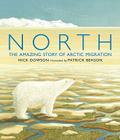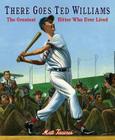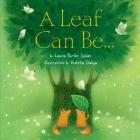My fellow judges and I are still hard at work trying to finalize our round one shortlist for the Cybils nonfiction picture book category. It’s a difficult task because there are so many great books this year! Here are some reviews of some of my personal favorites (Note: I had many, MANY favorites this year). I enjoyed and would recommend all of these.
LITTLE DOG LOST : THE TRUE STORY OF A BRAVE DOG NAMED BALTIC by Mônica Carnesi (Nancy Paulsen Books/Penguin)
This is the true story of a nameless dog seen floating on a piece of ice down a river in Poland. Initial attempts to save the dog fail, and he is washed out to sea. Fortunately, the crew onboard a research vessel sees him and finally succeeds in rescuing the dog and nursing him back to health. The story is told in simple but engaging text with delightful illustrations. I think kids and dog lovers of all ages will love this book. I know I did!

NORTH : THE AMAZING STORY OF ARCTIC MIGRATION by Nick Dowson, illustrated by Patrick Benson (Candlewick)
This beautiful book is firmly on my list of all-time favorite nonfiction picture books. Rather than talk about why animals migrate south for the winter, this book looks at the flip side: why and how they come back from all over the world to live in the Arctic the rest of year. It presents a wide variety of animals, including many different kinds of land mammals, birds, whales, and fish. The artwork is stunning, the text is both factual and lyrical, and the layout maximizes the effect on each on every page. This is about as perfect a nature book as I could imagine. Highly recommended!

THERE GOES TED WILLIAMS: THE GREATEST HITTER WHO EVER LIVED by Matt Tavares (Candlewick)
This is another beautiful book by Candlewick. What I enjoyed most about this book is that the love the author has for his subject comes through on every page, in both the text and the illustrations. Even if you’re not a big baseball fan (which, admittedly, I’m not), there is still a lot to love about this book, especially Ted Williams’ admirable perseverance and dedication to his sport. The author’s note explains that Williams wasn’t perfect, which makes him even more human. There’s also a bibliography and, for true baseball fans, a detailed table of Williams’ career stats.

EGGS 1, 2, 3: WHO WILL THE BABIES BE? by Janet Halfmann, illustrated by Betsy Thompson (Blue Apple)
I thought this was one of the stand-out books for younger kids, teaching number recognition and counting as well as introducing a variety of different animals that hatch from eggs and what those eggs look like. The text is appropriately simple but descriptive and interesting, with the repeated question, “Who will the babies be?” and a fold-out page providing the answer for each number 1–10. The collage artwork gives the pages a rich, three-dimensional look and adds tons of visual interest. My only complaint with this book is that I don’t think the numbers match how many eggs the animals might really have (nine frog eggs, for example), so it’s a bit misleading in that regard, but it does such a wonderful job of achieving its other goals that I’m willing to let that detail slide.

A LEAF CAN BE… by Laura Purdie Salas, illustrated by Violeta Dabija (Millbrook/Lerner)
This is a deceptively simple, but really quite ingenious, rhyming poem about all of the different things a leaf can do or be used for throughout the year. The glowing illustrations provide the perfect accompaniment as well as an explanation of each line of the poem, plus there’s a section at the end of the book with even more details. I think young kids will love this book and it will open their eyes to a whole new appreciation of the nature all around them. Well done!
Disclaimer: All of these books were obtained from my amazing local public library system.


